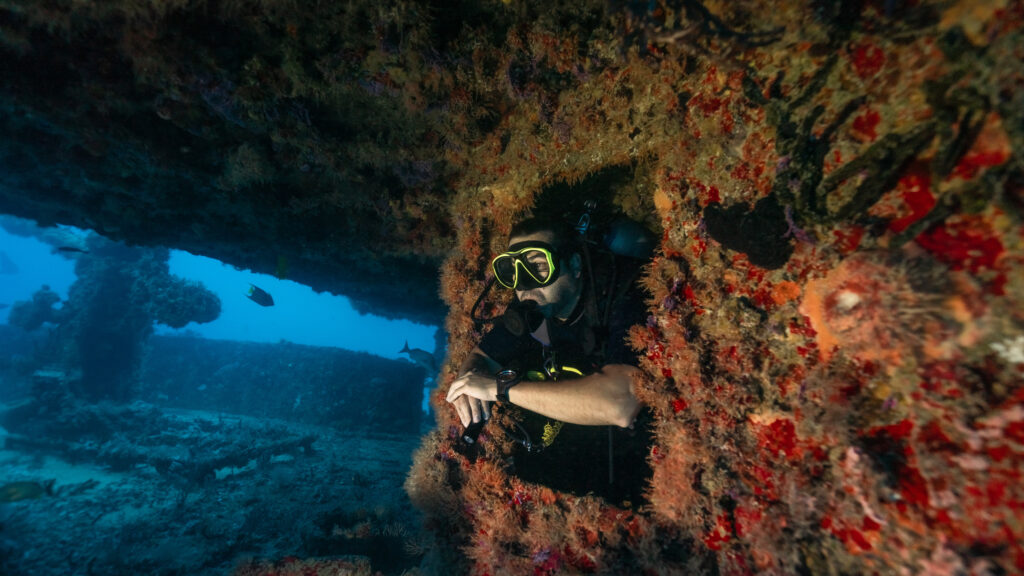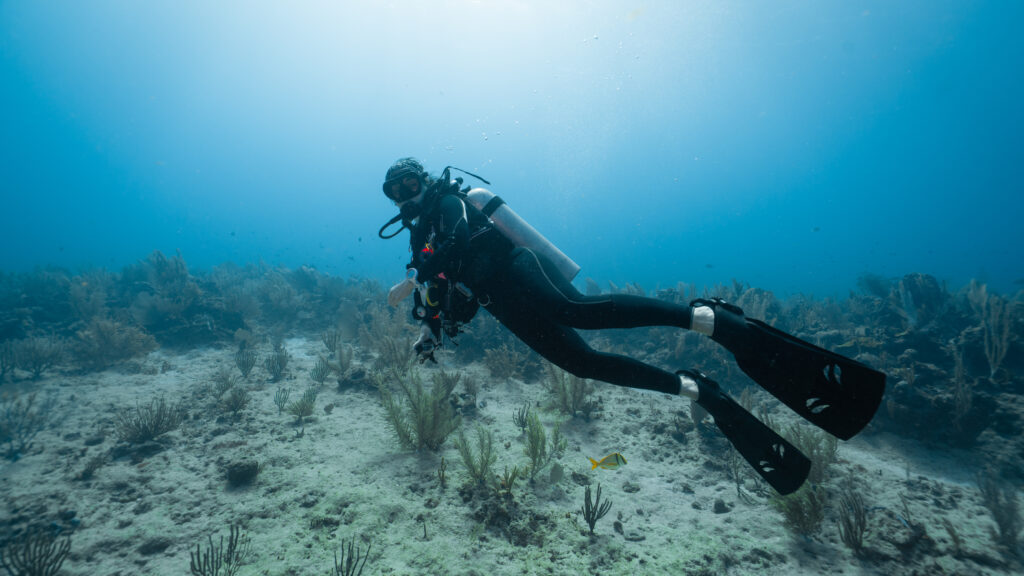What is Water Pressure when Diving?

Water pressure is a crucial concept in scuba diving, defined as the force per unit area exerted by the weight of water. The weight of the water column above a certain depth creates this pressure. This pressure is not just from the top down, but it is exerted equally from all directions. The deeper a diver descends, the greater the water pressure exerted on their body.
What is a Knot?

A knot is a unit of speed measurement used predominantly in maritime and aviation contexts. It is employed extensively in the fields of nautical navigation and scuba diving. The term “knot” is derived from the practice of counting the number of knots on a log line that unspooled from a ship over a specific period of time, which provided a measure of the ship’s speed. Today, the knot is defined as one nautical mile per hour and serves as a valuable metric for scuba divers and watercraft operators alike.
What is a Lost Buddy Drill?

The lost buddy drill is a critical safety procedure in scuba diving designed to locate a missing dive partner and ensure the safety of both divers. When a buddy pair becomes separated underwater, it is vital to act quickly and effectively to minimize risk. This drill outlines a series of steps to be taken in such an event, focusing on maintaining calm, executing a systematic search, and communicating effectively. The lost buddy drill is an essential part of scuba training and is emphasized for all levels of divers, from beginners to advanced technical divers, due to its potential to prevent accidents and save lives.
What is Vasoconstriction?

Vasoconstriction is the process by which blood vessels narrow due to the contraction of muscular walls in the vessels, primarily small arteries and arterioles. This biological phenomenon is significant in regulating blood flow and blood pressure throughout the body. For scuba divers, understanding vasoconstriction is crucial because it directly impacts how their bodies react to the underwater environment, including the cold temperatures and increased pressure that are often encountered during a dive.
What is a Rebreather?

A rebreather is a sophisticated and technologically advanced piece of diving equipment that allows divers to maximize their time underwater while minimizing the environmental impact of their dive. Unlike traditional open-circuit scuba systems, which release exhaled air into the water, rebreathers filter and recirculate the exhaled air, allowing divers to breathe the same air multiple times. This closed-circuit system significantly reduces the amount of gas consumed during a dive and enables divers to explore deeper depths and stay submerged for longer periods. However, using a rebreather requires specialized training and knowledge to ensure safe and efficient operation.
What is an Electro Galvanic Fuel Cell (EGFC)?

An electro galvanic fuel cell (EGFC) is a type of electrochemical sensor used extensively in scuba diving equipment for oxygen monitoring. It operates based on the principle of generating an electrical current through a chemical reaction between oxygen and a fuel, typically a metal like lead or zinc. The current produced is directly proportional to the amount of oxygen present, making EGFCs crucial for ensuring safe breathing gas mixtures in underwater environments. This entry delves into the fundamental principles, historical development, technical specifications, applications in scuba diving, maintenance practices, and regulatory considerations of electro galvanic fuel cells.
What is a J Cylinder?

A J cylinder is a type of scuba diving tank known for its distinctive size and capacity. It is a critical component of a diver’s breathing apparatus, holding compressed air that allows for underwater respiration. These cylinders are integral to both recreational and professional diving, providing the necessary air supply for extended periods underwater. Named after its shape and size, the J cylinder has become a standard in the diving community due to its reliability and capacity, making it suitable for various types of diving activities, from shallow recreational dives to deeper, more technical dives.
What is the Maximum Operating Depth?

Maximum Operating Depth (MOD) is a critical concept in the field of scuba diving. It refers to the deepest depth at which a particular gas mixture can be used safely without the diver experiencing oxygen toxicity. Understanding and adhering to the MOD is essential for ensuring diver safety and preventing potentially life-threatening conditions. MOD varies depending on the gas mixture being used and is influenced by the partial pressure of oxygen within the breathing gas. By comprehending the significance of MOD, divers can plan their underwater excursions more effectively and reduce the risks associated with diving to greater depths.
What is Upwelling?

Upwelling is a critical oceanographic phenomenon where deep, cold, and nutrient-rich water rises to the surface, replacing the warmer, nutrient-depleted surface water. This process is vital to marine ecosystems as it brings essential nutrients like nitrate and phosphate to the photic zone, where sunlight can drive photosynthesis. Consequently, upwelling zones are often rich in marine life and are crucial for global fisheries. Scuba divers find these regions particularly interesting due to the diverse and abundant marine species supported by the nutrient influx. Understanding upwelling is fundamental for appreciating its ecological and economic significance.
What is a Drop Weight?

A drop weight, a fundamental tool in scuba diving, plays a crucial role in managing a diver’s buoyancy. By adding or removing weight, divers can achieve neutral buoyancy, allowing them to maintain a stable position underwater without floating upwards or sinking uncontrollably. This balance is essential for conserving energy, enhancing underwater navigation, and ensuring safety during a dive. Drop weights can be attached to a diver’s belt, integrated into buoyancy control devices (BCDs), or even strapped to ankles, depending on individual preferences and specific diving conditions.
